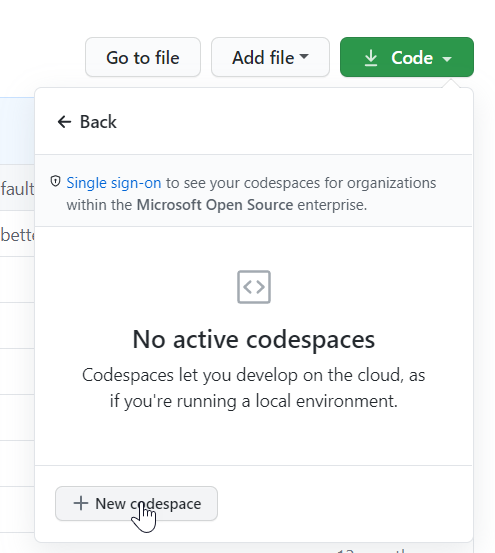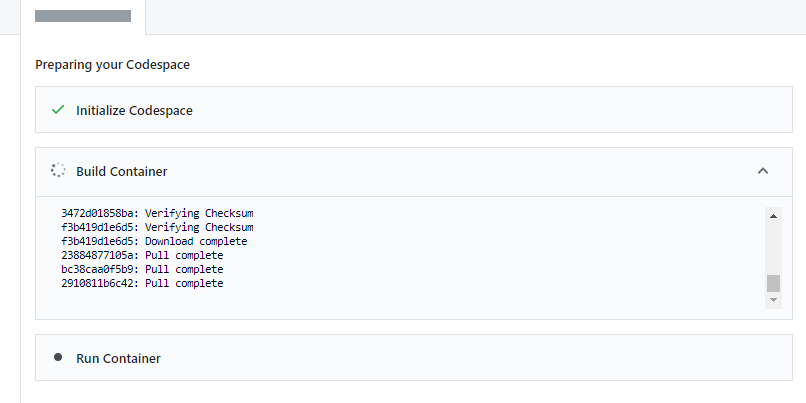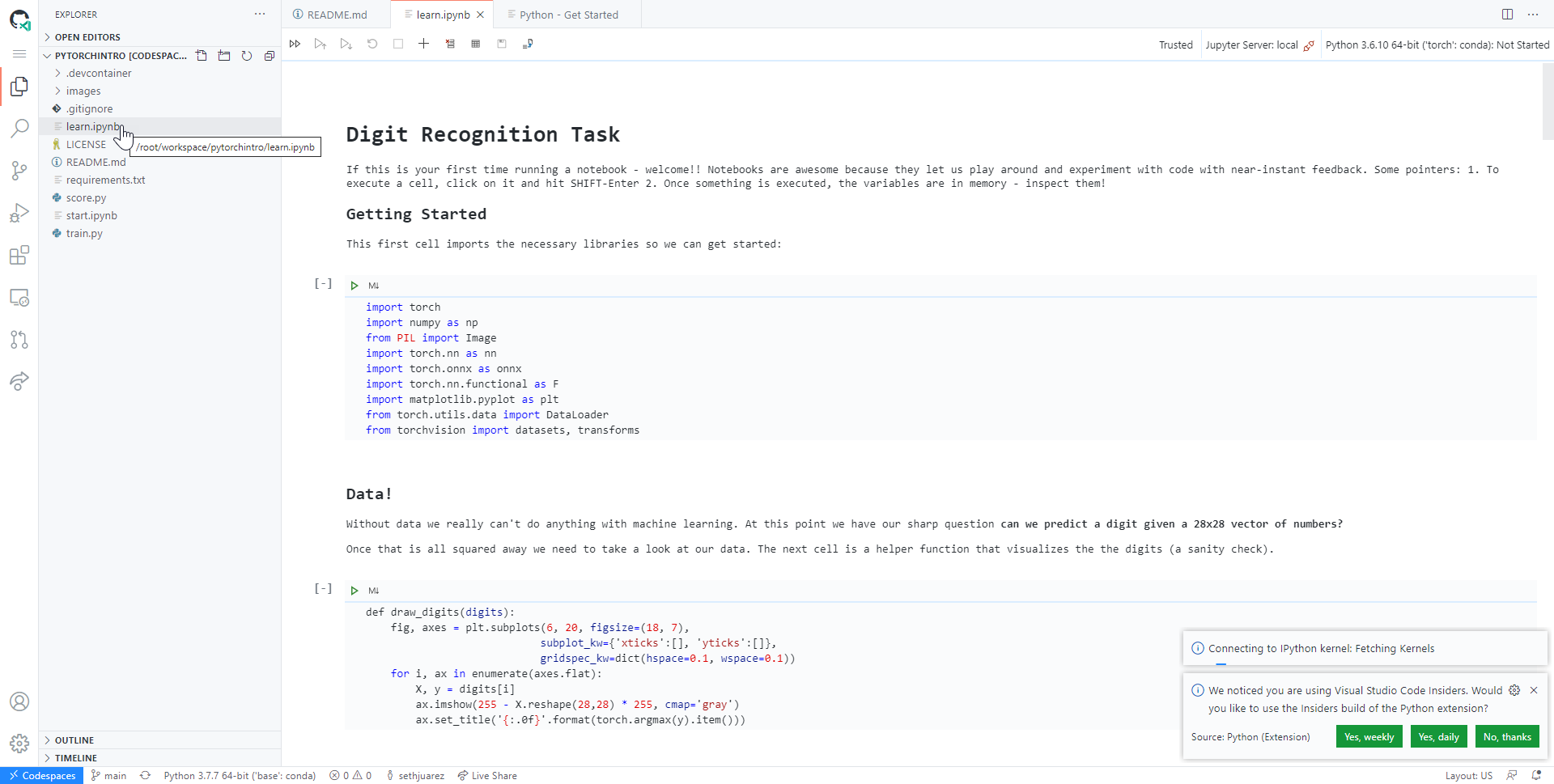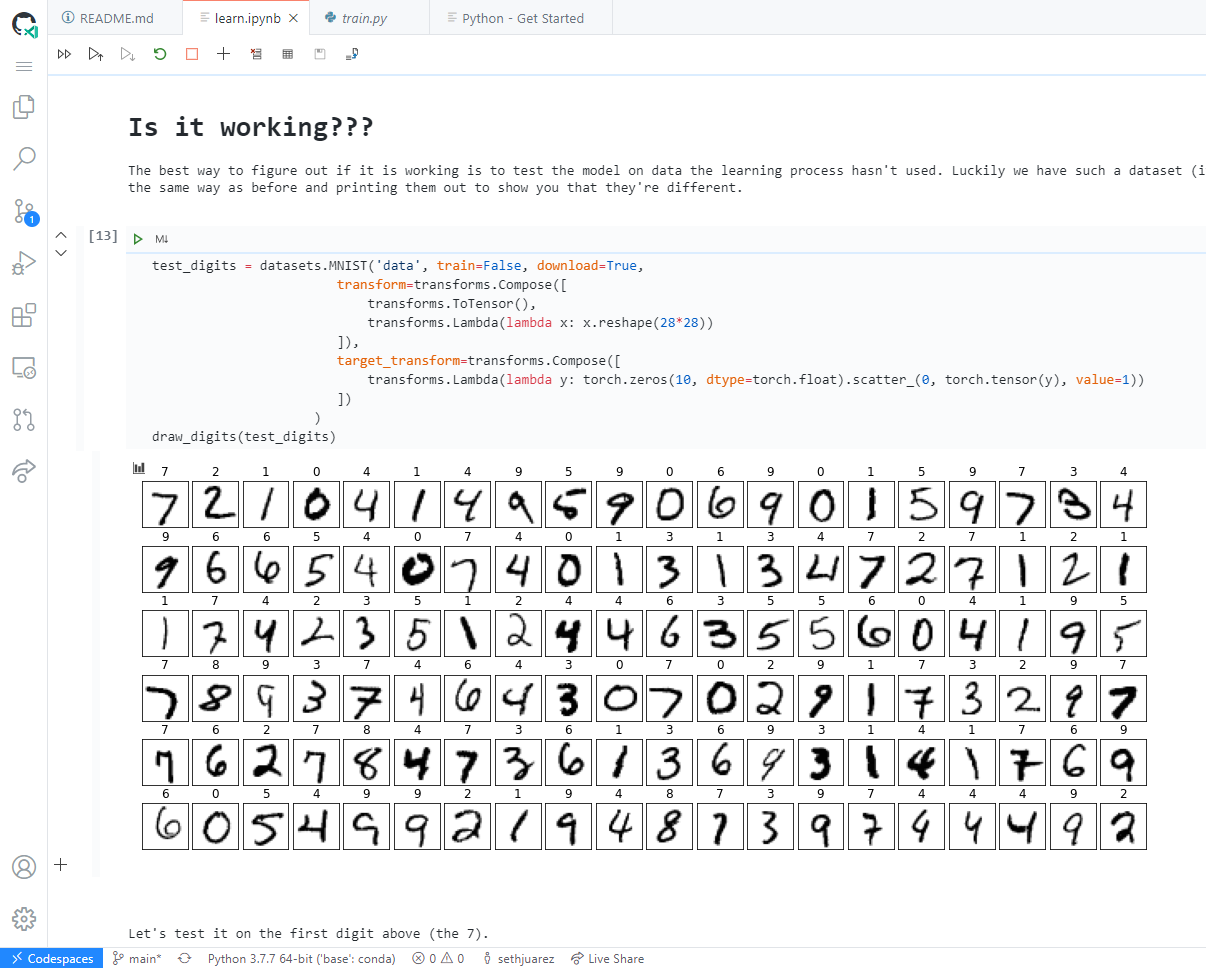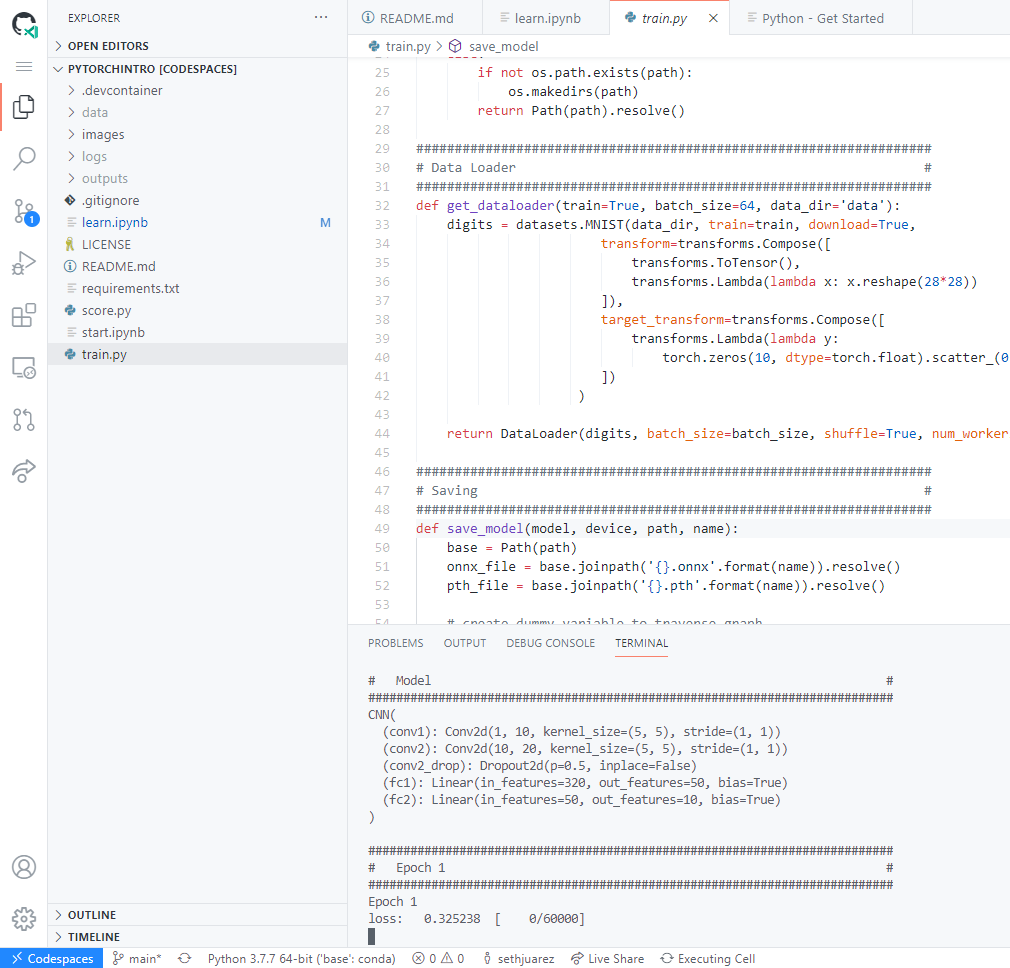sethjuarez / Pytorchintro
Labels
Projects that are alternatives of or similar to Pytorchintro
TL;DR
Do this:
- Clone this repo
- Create new codespace
- Wait for the codespace container to build (takes 5-6m)
- Open learn.ipynb
- Run all teh things! (Hit
SHIFT-ENTERin all of the cells: I closed the file explorer to get more space too)
- (Other things...)
- Become a millionaire
(OPTIONAL)
- Run the training script by executing
python train.pyin the codespaces terminal
Add an issue to the repo if something doesn't work so I can fix it!
Machine Learning Quickstart
The purpose of this brief tutorial is to get you oriented on the Machine Learning Process. Machine Learning (ML) is basically a different way of creating "code" or something that is executed much in the same way code is executed. The primary difference is that machine learning has set classes of execution paths (usually called models) that have fixed parameters that need to be "learned." For supervised learning these parameters are optimized by giving ML algorithms examples of the inputs and answers. The process usually proceeds as follows:
- Start with a question
- Find relevant data
- Select appropriate items from the data
- Choose a model type
- Optimize the model parameters
- Save model
- Put model into production
Local
The starting notebook shows the local approach to the Machine Learning Process. In this notebook you will find the first 5 steps outlined above but on a smaller scale (in this case the problem is small as is - generally for larger problems we begin on a small scale and then once some of the hypothesis are proved we move to large scale).
Problem
Because I am more interested that you learn the process I decided to go with the "Hello World" of Machine Learning: predicting digits.
Basically, given a 28x28 pixel grayscale image, can you predict the actual handwritten number? Mathematically speaking, given a 784 sized vector of numbers between 0-255, can you return the corresponding digit?
Questions and/or Suggestions
If there is any part of this that is hard to understand please add an issue to the repo! Would love to make this super easy to understand. My personal opinion is that everyone can understand the rudiments of what is happening!

